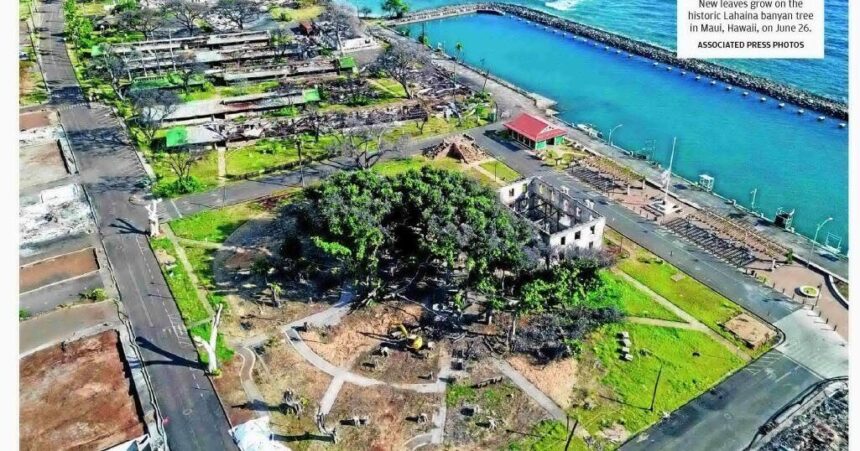When a deadly wildfire tore through Lahaina, Hawaii, on Maui last August, the wall of flames scorched the 151-year-old banyan tree along the historic town’s Front Street. But the sprawling tree survived the blaze, and thanks to the efforts of arborists and dedicated volunteers, parts of it are growing back — and even thriving.
One year after the fire, here’s what to know about the banyan tree and the efforts to restore it.
Why is Lahaina’s banyan tree significant?
The banyan tree is the oldest living one on Maui but is not a species indigenous to the Hawaiian Islands. India shipped the tree as a gift to commemorate the 50th anniversary of the arrival of the first Protestant missionaries to live in Lahaina. It was planted in 1873, a quarter-century before the Hawaiian Islands became a U.S. territory and seven decades after King Kamehameha declared Lahaina the capital of his kingdom.
…
What other trees were destroyed in the fire?
Sparkman estimates that Lahaina lost some 25,000 trees in the fire.
These included the fruit trees that people grew in their yards as well as trees that are significant in Hawaiian culture, such as the ulu or breadfruit tree; the fire charred all but two of the dozen or so that remained.
Since the blaze, a band of arborists, farmers and landscapers — including Sparkman — has set about trying to save the ulu and other culturally important trees. Before colonialism, commercial agriculture and tourism, thousands of breadfruit trees dotted Lahaina.
To help restore Lahaina’s trees, Sparkman founded a nonprofit called Treecovery. The group has potted some 3,500 trees, he said, growing them in “micro-nurseries” across the island, including at some hotels, until people can move back into their homes.





